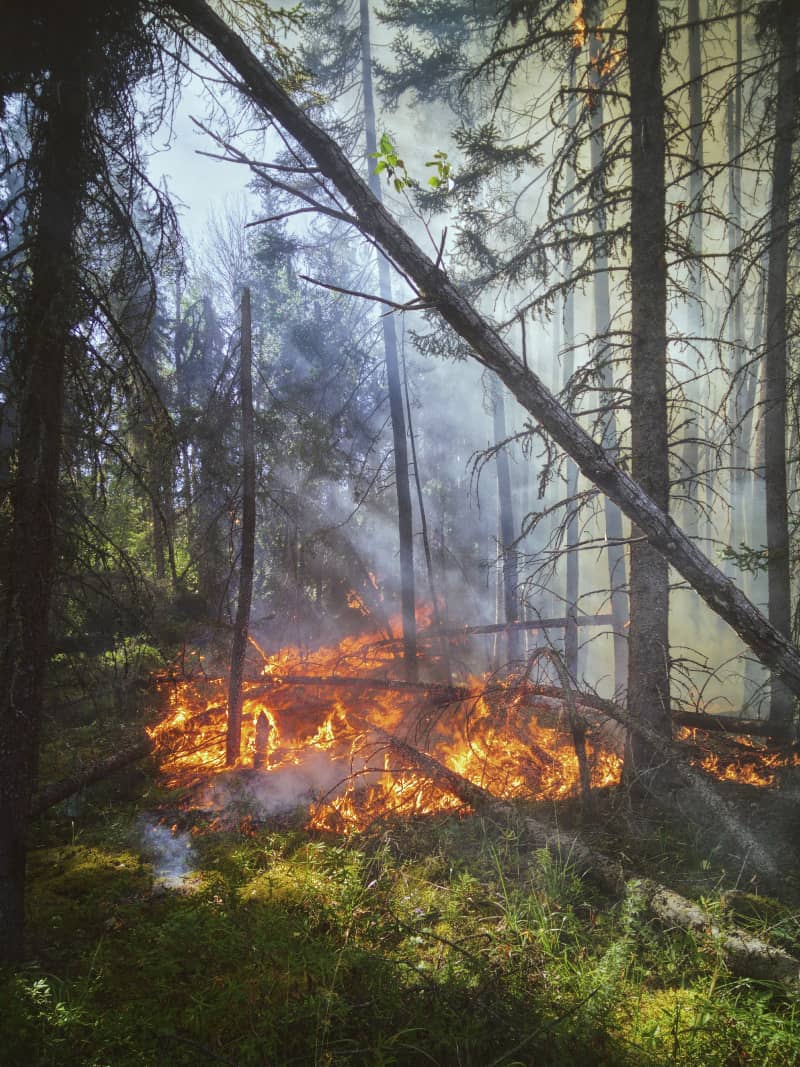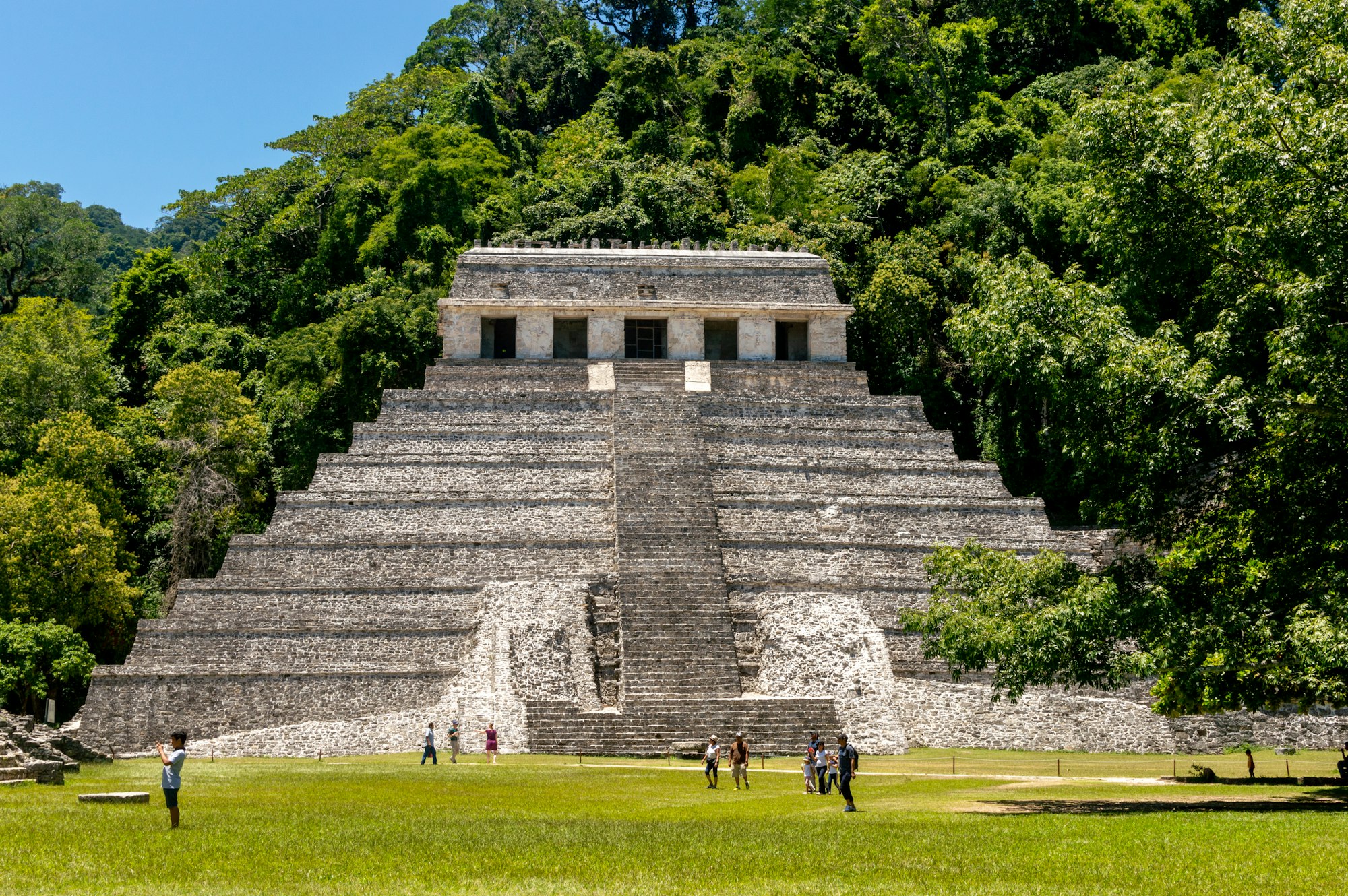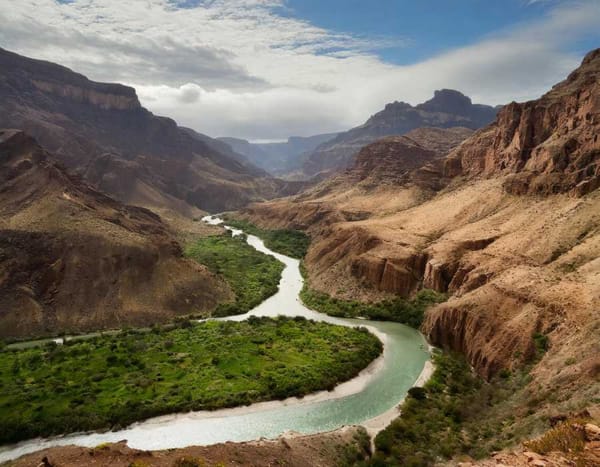Urgent action is needed against global warming in Mexico
Global warming cannot be reduced without substantial modifications to the socioeconomic system. The accumulated costs of inaction during the century are equivalent to losing more than 4.5 times Mexico's current GDP.

Amparo Martínez Arroyo, a researcher at UNAM's Institute of Atmospheric Sciences and Climate Change (ICAyCC), believes that implementing short-term actions, together with long-term ones, is the best strategy to curb climate change, reduce its effects and improve the lives of the population in general.
If we are not clear about the need to reduce it at the same time that we change our emissions practices, if we do not know it, adaptation and vulnerability reduction will be more complicated. For this, we need more than ever to inform people, capacity building, and great participation said the doctor in Ecology from the University of Barcelona.
Several studies have shown that inaction for cities like Mexico or in areas such as agriculture, water control can have serious social and economic consequences.
According to the Intergovernmental Panel on Climate Change (IPCC), short-term actions include improvements in the supply and distribution of fuels; the abandonment of coal (preferably renewable energies); the use of hybrid vehicles, more efficient lighting systems, as well as improving the management of cropland and pastures, reducing chemical fertilizers, reforestation and forest management, in addition to methane recovery from landfills and better land-use planning.
We live in a world 1.1 degrees warmer than in the pre-industrial era, and the disastrous effects are predicted to increase if the temperature rise continues, so the talk now is of biological damage and socioeconomic consequences.
"This change cannot be reduced if we do not make substantial modifications to our socioeconomic system. It affects all regions in a differentiated manner in the territories, depending on geography, but also on the conditions in which their population and facilities are located; it disproportionately damages countries and sectors that did not necessarily contribute to greenhouse gas emissions," she estimated.
The Sixth National Communication on Climate Change calculated the accumulated costs of inaction during the century, which would be compatible with the loss of more than 4.5 times Mexico's current gross domestic product. In addition, Mexico City, Guadalajara, and Monterrey would present losses that could exceed one billion dollars in the 2020s, the expert recalled.
Regarding rain risks, annual damage of seven billion dollars is expected in the country and up to 130 million dollars for coastal floods, where Tamaulipas, Veracruz, and San Luis Potosí will be the entities with the highest levels of risk due to flooding.
Stopping or slowing down global warming depends on reducing the production of black carbon and short-lived pollutants, hence the urgency of short-term actions, especially in nations like ours where the generation of these pollutants is high, suggests the expert. Adaptation and mitigation measures are required to support sustainable development based on the Sustainable Development Goals.
There will be no success in avoiding emissions without reducing social and economic inequalities, commented the expert in interactions between the atmosphere, biosphere, and hydrosphere as part of the talk "The role of science (natural and social) in the definition of climate and environmental policies".
Universities have the moral obligation to transmit to society the warnings and proposals on this subject, to be receptive to what it raises, to "have an impact on the time we have," she added.
Actions by region to face global warming in Mexico
Mexico's geographic location influences it to be affected by meteorological systems of great diversity and complexity. Therefore, in the face of climate change, mitigation and adaptation actions must be taken by regions, in an informed and documented manner, to avoid costly and unsuccessful ones, considers the director of the Institute of Atmospheric Sciences and Climate Change (ICAyCC), Jorge Zavala Hidalgo.
On the occasion of World Meteorological Day, which is commemorated on March 23, the academic, who also holds a Ph.D. in Physical Oceanography, emphasizes that each zone has its fragilities and dangers, which must be identified. It is necessary to understand what vulnerabilities we are building, what actions we must take, and which ones must be disaggregated.
"There are those who give more weight -and this is good- to the idea that the planet should not continue to warm, there is a lot of talk about reducing greenhouse gas emissions and other causes of climate change, such as deforestation, but we must recognize this and do it by region," he adds.
The postdoctoral fellow at the Center for Ocean-Atmospheric Prediction Studies, Florida State University, recalls that this year the theme of the commemoration is "Early warning, early action". It is a challenge to identify the hydrometeorological hazard and warn a community that will be affected by an extreme weather system.
Efforts are made to establish them accurately, but in addition, it is necessary to communicate about phenomena that are not extreme or that may cause a relatively minor affectation. This requires, above all, knowledge of the region and weather systems.
Climate change is caused by human activities: the emission of greenhouse gases, which modify phenomena such as heatwaves, droughts, and the alteration of precipitation seasons because rainfall is concentrated in fewer days, so these events represent a problem.
Recent data from the World Meteorological Organization indicate that 2021 was one of the seven warmest years on record. The global average temperature was approximately 1.11°C above pre-industrial levels (1850-1900). This is the seventh consecutive year (2015-2021) in which this has happened.
The decade from 2011 to 2020 is the warmest decade on the instrumental record. It developed in the context of a persistent, long-term trend of climate change. As such, 2016, 2019, and 2020 occupy the top three places as the warmest.
Challenges
Jorge Zavala indicates that the country has diverse meteorological systems that affect it, which occurs for several reasons, among which are: the interaction with two oceans; on the one hand the Pacific, and on the other hand the Caribbean and the Gulf of Mexico, as part of the Atlantic.
In addition to a complicated orography, which affects the development of some other phenomena. "When the winds interact with the mountains, orographic convection and the development of storms are favored".
Faced with this situation, integrated warning systems must be in place to obtain knowledge or forecast of meteorological conditions and also a level of response from the hydrological system.
"A combination of observation networks, automated warning systems, vulnerability studies of each region, and especially of human resources is required because when we talk about modernizing our early warning systems, we also need a greater capacity of personnel," said Zavala Hidalgo.
Also of greater communication between higher education institutions, generators of scientific knowledge, and government authorities. "It is a structural issue, we must seek ways to achieve greater collaboration that generates mutual benefit," he points out.

Global warming erodes pre-Hispanic constructions
Climate change affects the "color" of the walls of archaeological monuments in Chiapas, mainly those located in Mayan areas. "In the past, it was common to find them completely green or red, even black. Now they are naked," said Eberto Novelo Maldonado, professor at the Faculty of Sciences (FC) of the UNAM. Apart from giving them color, the species of algae that live in the pre-Hispanic buildings protect them from humidity. There is a correlation between the gradual decrease in the growth of these plants and the climatic data of the region.
The increase in temperature and an indefinite rainy season (now they are "erratic, intense and discontinuous") cause physical weathering to affect archaeological monuments more. "Previously such effects were tempered by algae, which avoid the pounding of rain, absorb and maintain a permanent moisture gradient," he noted. When rainfall ceases and the temperature rises, sudden evaporation occurs and little by little fractures appear in the constructions. The rock joints, mainly stucco, are directly attacked by "climatic weathering".
The fact that the algae growth layer is smaller will surely affect the stability or texture of the buildings, warned Novelo Maldonado, from the FC's Laboratory of Continental Algae, Ecology and Taxonomy. In the southeast, there are buildings made of limestone rock that could dissolve with too much water. But the floods have not affected important archaeological zones or those with tourist affluence.
However, in arid regions, climate change and the wind that carries sand, sandstone, or organic particles, degrade them when it hits them. "In tropical areas, this does not happen thanks to the vegetation cover, and in more open areas, such as Teotihuacan, there are no extremely strong winds that continuously erode the pyramids of the Sun and the Moon, as well as other buildings," he explained.
In the north, there are important historical monuments, although not as spectacular as those in the center and south of the country. Located in arid areas, they are archeological sites with cave paintings dating from the beginning of the colonization of the national territory. "The whole country is full of these archeological zones", from the north, with vestiges of the first settlers, to Chiapas, Quintana Roo, and Yucatan.
For their conservation, specific protocols are applied to avoid deterioration caused by algae, ants, bats, worms, and even tourists who touch and grease them. Even large cities such as Bonampak and Palenque are not completely uncovered. In the latter, for example, only 15 to 20 percent of its extension is exposed. It was an immense city, but only the central zone is open, the nucleus that contained the great palaces, concluded the specialist in continental algae that grow in the pyramids of southeastern Mexico.




